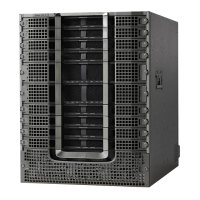PurposeCommand or Action
Enters global configuration mode.configure terminal
Example:
Router# configure terminal
Step 2
Example:
Router(config)#
Enables the Usage-based Billing feature for file mode and
configures it.
cable metering filesystem filesys [flow-aggregate]
[cpe-list-suppress] [full-records]
Step 3
Example:
Router(config)# cable metering filesystem
harddisk:
The system will write the billing records on this file system
using a file name that contains the hostname of the router
followed by a timestamp when the record was written.
Example:
Router(config)#
(Optional) Enables SNMP traps for usage-based billing events.
Traps are sent when a new billing record is available, or when
snmp-server enable traps cable metering
Example:
Router(config)# snmp-server enable traps cable
metering
Step 4
the system encountered a failure (such as insufficient disk
space) in writing the new billing record.
Example:
Router(config)#
(Optional) Enables logging for deleted SNMP service flows,
which allows the billing feature to include information about
deleted service flows.
cable sflog max-entry number entry-duration time
Example:
Router(config)# cable sflog max-entry 2000
entry-duration 7200
Step 5
Example:
Router(config)#
(Optional) Enables specification of the source-interface for
the billing packets, usually a loopback interface.
cable metering source-interface interface
Example:
Router(config)# cable metering source-interface
loopback100
Step 6
Example:
Router(config)#
Cisco cBR Series Converged Broadband Routers Troubleshooting and Network Management Configuration
Guide for Cisco IOS XE Fuji 16.8.x
136
Usage-Based Billing (SAMIS)
Enabling Usage-based Billing Feature File Mode Using CLI Commands

